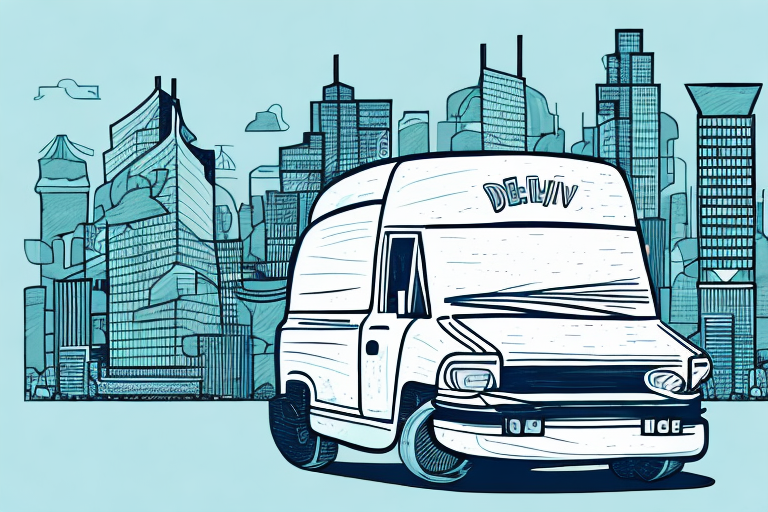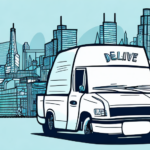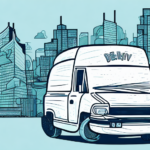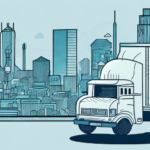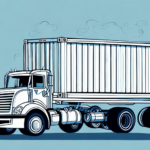Discover the Benefits of Becoming a Delivery Van Driver
Are you considering a career change? Do you enjoy spending time on the road and interacting with different people? Becoming a delivery van driver might just be the perfect role for you. This popular and rewarding career offers numerous benefits, from flexible working hours to opportunities for advancement. Read on to explore why this career choice could be right for you.
Why Delivery Van Driving is a Popular Career Choice
Delivery van driving has surged in popularity in recent years, driven by the exponential growth of e-commerce and online shopping. According to the Office for National Statistics, online retail sales in the UK increased by over 30% in the past year, leading to heightened demand for delivery drivers.
One of the main benefits of this job is its flexibility. Many delivery companies offer varying shifts, allowing drivers to choose hours that fit their personal schedules. This flexibility makes it an ideal option for those balancing other commitments or seeking part-time work. Additionally, the role provides an excellent way to explore different areas, whether locally or across the country.
Moreover, the delivery sector offers strong job security. With the continuous rise of online shopping, the need for reliable delivery drivers is projected to grow steadily. This trend is supported by industry reports from sources such as GOV.UK, ensuring long-term employment prospects for those entering the field.
How to Become a Delivery Van Driver: A Step-by-Step Guide
If you're interested in becoming a delivery van driver, here are the essential steps to follow:
- Obtain the Necessary License: Ensure you hold a valid driving license for the vehicle you plan to drive, typically a Category B license in the UK.
- Find Employment: Look for job openings through online job boards, recruitment agencies, or directly on company websites such as ShipScience.
- Attend Interviews: Prepare for and attend interviews, which may include a driving test to assess your skills.
- Undergo Training: Once hired, you may receive training on company policies, delivery protocols, and vehicle maintenance.
Keep in mind that delivery van drivers often work long hours, including weekends and holidays. Effective time management and the ability to perform under pressure are crucial skills for success in this role.
The Key Skills Needed to Succeed as a Delivery Van Driver
To excel as a delivery van driver, several key skills are essential:
- Time Management: Ensuring timely deliveries requires excellent scheduling and organizational abilities.
- Customer Service: Interacting positively with customers is vital, as drivers often represent the company's image.
- Driving Proficiency: Strong driving skills and familiarity with various routes enhance efficiency and safety.
- Package Handling: Ability to load, unload, and organize packages efficiently ensures accuracy and prevents damage.
- Communication: Effective communication with team members and supervisors helps address issues promptly.
Attention to detail is particularly important, as even minor mistakes in deliveries can have significant repercussions for both the driver and the company.
Salary Expectations for Delivery Van Drivers: What You Need to Know
The salary for delivery van drivers can vary based on factors such as experience, location, and the employer. In the UK, the average annual salary ranges from £20,000 to £25,000. Experienced drivers or those in senior positions can earn upwards of £30,000.
Additionally, many companies offer benefits like bonuses, pension schemes, and paid time off. Overtime opportunities can further increase earnings, with some drivers earning an additional £1,000 to £3,000 per year through extra shifts.
It's important to note that salaries may differ in other regions. For the most accurate and up-to-date information, refer to resources like PayScale or the Office for National Statistics.
What to Expect from Your Day-to-Day Work as a Delivery Van Driver
As a delivery van driver, your daily tasks will primarily involve:
- Delivering packages to various addresses on your assigned route.
- Loading and unloading parcels, ensuring they are handled with care.
- Using handheld devices or paperwork to track deliveries and maintain records.
- Interacting with customers, answering questions, and obtaining signatures when necessary.
- Maintaining the cleanliness and functionality of your delivery van.
Efficiency and organization are key, as drivers must manage multiple deliveries within set timeframes. Navigating through traffic, utilizing GPS systems, and adapting to unexpected changes are common aspects of the job.
The Different Types of Deliveries You Might Be Responsible For
Delivery van drivers handle a diverse range of items, including:
- Small Parcels: Everyday packages such as electronics, clothing, and household items.
- Large and Bulky Goods: Items like furniture or appliances that require careful handling.
- Perishable Goods: Food items or flowers that need temperature-controlled transportation.
- Hazardous Materials: Chemicals or medical supplies that require special safety measures and certifications.
Each type of delivery comes with its own set of challenges and regulations. It's crucial to understand the specific requirements for handling different items to ensure safe and efficient transportation.
The Pros and Cons of Working as a Delivery Van Driver
Pros
- Flexibility: Choose work hours that fit your schedule.
- Independence: Enjoy working autonomously on the road.
- Job Security: Growing demand ensures stable employment opportunities.
- Physical Activity: Engage in regular movement through loading and unloading packages.
Cons
- Physically Demanding: Requires lifting and moving heavy items regularly.
- Long Hours: May involve extended periods of driving and irregular schedules.
- Risk of Accidents: Increased exposure to road hazards and potential injuries.
- Stressful Conditions: Navigating traffic, meeting delivery deadlines, and handling customer complaints can be challenging.
Common Challenges Faced by Delivery Van Drivers and How to Overcome Them
Delivery van drivers encounter various challenges, including:
Traffic Congestion
Heavy traffic can delay deliveries and increase stress levels. To mitigate this, use real-time traffic updates through GPS systems like Google Maps or Waze to find alternative routes and avoid congested areas.
Navigation Difficulties
Unfamiliar routes can lead to inefficiencies. Familiarize yourself with your delivery areas, and consider using route optimization software to plan the most efficient paths. Regularly updating your map databases ensures accurate navigation.
Adverse Weather Conditions
Driving in extreme weather can be hazardous. Stay informed about weather forecasts and plan your routes accordingly. Ensure your vehicle is equipped with necessary safety features, such as tire chains for snow or proper lighting for rain.
Package Theft or Damage
Protecting cargo is essential. Use secured compartments within the van, lock doors when unattended, and avoid leaving valuable items in plain sight. Additionally, maintaining proper insurance coverage can provide financial protection against theft or damage.
How Technology is Changing the Delivery Van Driving Industry
Advancements in technology are revolutionizing the delivery van driving industry:
GPS and Route Optimization
Modern GPS systems and route optimization software enhance efficiency by identifying the quickest and most fuel-efficient routes. Tools like GPS.gov provide real-time traffic data and dynamic routing capabilities.
Electric Vehicles
The shift towards electric delivery vans is reducing carbon emissions and operating costs. Companies like Volkswagen and Nissan are developing electric models tailored for commercial use, contributing to a more sustainable future.
Autonomous Vehicles and Drones
Future innovations may include autonomous delivery vans and drones, which promise to further streamline the delivery process. While still in development, these technologies have the potential to transform how goods are transported and delivered.
Digital Tracking and Management Systems
Integrated management systems allow for real-time tracking of deliveries, inventory management, and performance analytics. Platforms like Oracle offer comprehensive solutions to enhance operational efficiency and customer satisfaction.
Tips for Staying Safe on the Road as a Delivery Van Driver
Safety is paramount for delivery van drivers. Implement the following strategies to ensure your well-being on the road:
Vehicle Maintenance
Regularly inspect your van, checking essential components such as brakes, tires, lights, and fluid levels. Promptly address any maintenance issues to prevent breakdowns and accidents.
Defensive Driving
Practice defensive driving techniques, maintaining a safe following distance, anticipating other drivers' actions, and adhering to speed limits. Stay vigilant for potential hazards and avoid aggressive driving behaviors.
Avoiding Distractions
Limit distractions by keeping mobile devices out of reach while driving. Use hands-free systems if necessary and focus solely on the road to maintain concentration and react promptly to changing conditions.
Proper Use of Safety Gear
Always wear your seatbelt and ensure that all passengers do the same. Utilize additional safety gear, such as reflective vests and safety cones, when loading or unloading in low-visibility areas.
Stress Management
Manage stress through regular breaks, staying hydrated, and maintaining a positive outlook. Techniques such as deep breathing or listening to calming music can help alleviate tension during demanding shifts.
Advancement Opportunities for Delivery Van Drivers: What's Next?
The delivery van driving career path offers several opportunities for growth and advancement:
Supervisory Roles
Experienced drivers can transition into supervisory positions, overseeing teams of drivers and managing daily operations. These roles often come with increased responsibilities and higher salaries.
Logistics and Operations Management
With additional training, drivers can move into logistics or operations management, focusing on route planning, inventory control, and overall supply chain efficiency.
Driver Training and Mentorship
Drivers with extensive experience may become trainers, responsible for onboarding new hires and providing ongoing mentorship to enhance team performance.
Entrepreneurial Ventures
Some delivery van drivers choose to start their own delivery businesses, leveraging industry knowledge and entrepreneurial skills to establish independent operations. This path offers greater autonomy and potential for higher earnings.
In conclusion, becoming a delivery van driver offers a flexible and rewarding career with numerous benefits and opportunities for growth. Whether you seek job security, the chance to explore new areas, or a path to advancement, this role provides a solid foundation for a fulfilling professional journey.















